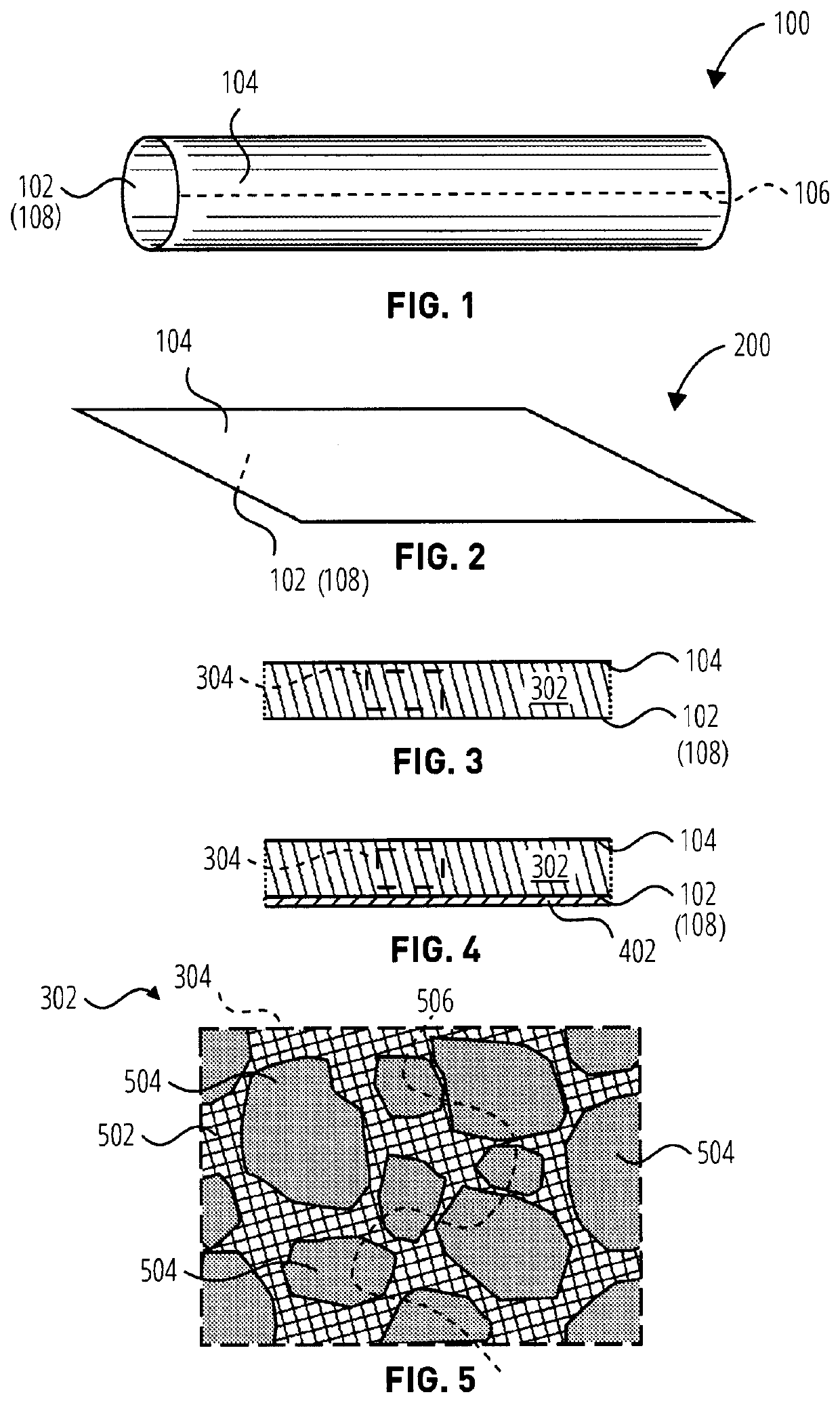Edible cellulosic casings and compositions, and methods of formation
a cellulosic and food technology, applied in the field of edible food casings, can solve the problems of limited supply, animal-derived casings are generally not suitable for vegetarian and vegan consumers, and the cost of manufacturing of animal-derived casings is high
- Summary
- Abstract
- Description
- Claims
- Application Information
AI Technical Summary
Benefits of technology
Problems solved by technology
Method used
Image
Examples
example composition 1
[0059]
Percentage(of total weight of these listed componentsComponentor of the final weight of casing material)Celluloseabout 55 wt. % to about 75 wt. %Non-cellulose hydrophilicabout 16 wt. % to about 40 wt. %polysaccharideFillersabout 0 wt. % to about 15 wt. %
[0060]In some embodiments, a composition of a casing material may comprise, consist essentially of, or consist of the following composition:
example composition 2
[0061]
Percentage(of total weight of these listed componentsComponentor of the final weight of casing material)Celluloseabout 55 wt. % to about 75 wt. %Peptideabout 10 wt. % to about 35 wt. %Non-cellulose polysaccharideabout 10 wt. % to about 35 wt. %Fillersabout 0 wt. % to about 15 wt. %
[0062]Either or both of Composition 1 and / or Composition 2, as listed above, may further comprise additional adhesion promoter(s) (e.g., peptide) on a food-contact surface of the casing, which—in embodiments according to Composition 2—may be an amount of peptide in addition to the amount of peptide listed in the table for Composition 2 above.
[0063]Either or both of Composition 1 and / or Composition 2, as listed above, may further comprise—e.g., with or without the aforementioned additional adhesion promoter(s) on the food-contact surface—water and one or more plasticizers in the material of the casing (e.g., in the casing composition) or applied to one or more surfaces of the casing material. For exam...
examples
[0098]Example drawn-down sample casings were produced from combined viscose (cellulose) and carrageenan solutions, the latter constituting a modifier solution in which carrageenan was the selected polysaccharide modifier. From the example casings, it was demonstrated that these casings may be readily consumed with adequate bite characteristics and adequate ability to be broken down by mastication (chewing by the consumer).
[0099]Modifier solutions were produced of carrageenan in a caustic solution, which modifier solutions were then mixed with viscose (e.g., a cellulose solution) to form samples of casing compositions at various amounts of the carrageenan and the viscose. The carrageenan used in the modifier solutions was 5-100F Iota, available from Ingredient Solutions, Inc., of Waldo, Me., USA. The sample casing compositions were then drawndown onto glass sheets (e.g., in the form of flat sheets), floated off the glass, and placed into an acid solution to regenerate the cellulose o...
PUM
| Property | Measurement | Unit |
|---|---|---|
| wt. % | aaaaa | aaaaa |
| tensile strength | aaaaa | aaaaa |
| tensile strength | aaaaa | aaaaa |
Abstract
Description
Claims
Application Information
 Login to View More
Login to View More - R&D
- Intellectual Property
- Life Sciences
- Materials
- Tech Scout
- Unparalleled Data Quality
- Higher Quality Content
- 60% Fewer Hallucinations
Browse by: Latest US Patents, China's latest patents, Technical Efficacy Thesaurus, Application Domain, Technology Topic, Popular Technical Reports.
© 2025 PatSnap. All rights reserved.Legal|Privacy policy|Modern Slavery Act Transparency Statement|Sitemap|About US| Contact US: help@patsnap.com

